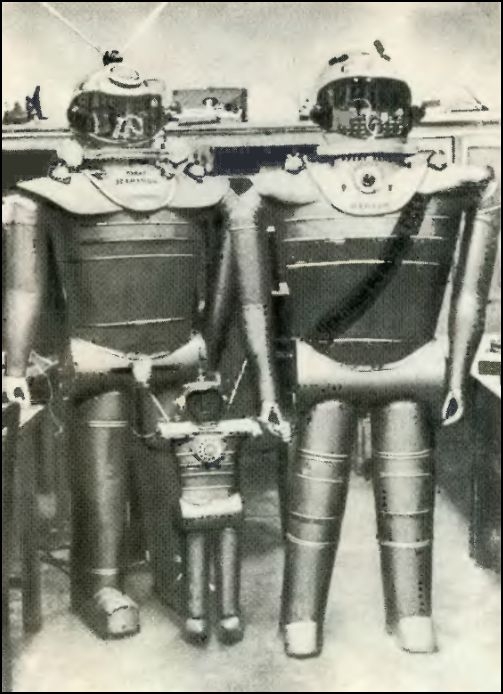
Electron (left) and Neptune (right) with child (Andryusha ?).
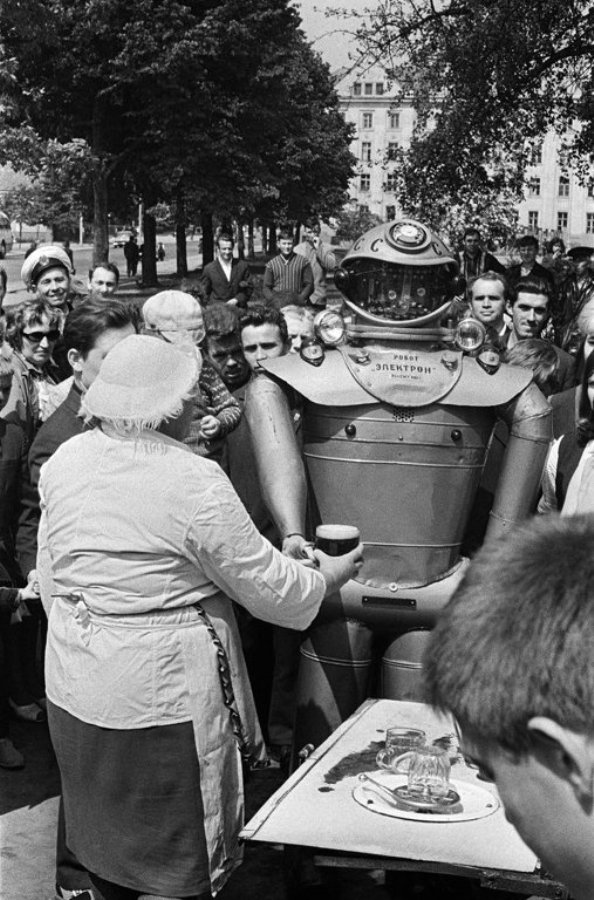
Electron getting a drink (detail below).
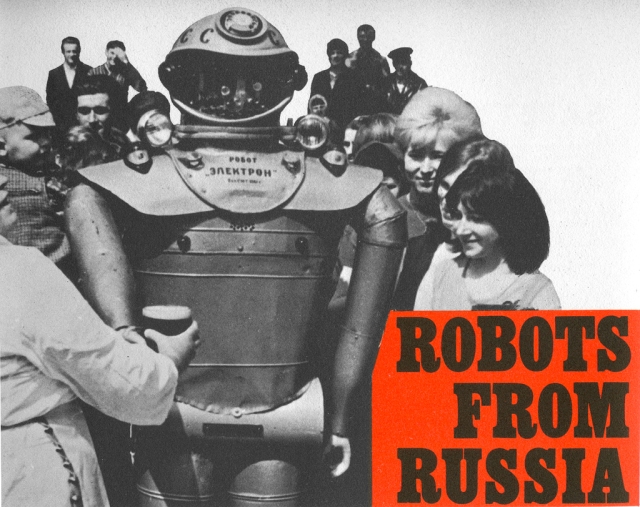
Source: Look and Learn – Young Scientist 1971 (Thanks to David Buckley for a copy of the original)
Russian schoolchildren have been building robots who can wander through their city, Kalin[in]grad, and act as guides. They have assembled no fewer than eighteen iron men at the young technicians' laboratory there, some of whom can walk and talk, and others who can waltz or polish floors. These creations are not the brainchildren of designers and scientists alone, nor were they assembled on a factory floor. The robots are mainly the work of children, fascinated by technology and the art of cybernetics.
One of the robots, who goes by the name of Neptune, wears a ribbon very proudly on his iron chest with the words inscribed in gold, "U.S.S.R. Robot Champion". He was entered for the robots' competition in Moscow and it is hard to say what won the hearts of the judges most, Neptune's brilliant game of chess, or his faultless waltz.
Electron, another robot, has not won the championship title yet, but nevertheless can obey 216 different commands, and Russia's strongest man, Leonid Zhabotinsky, might well envy Electron's athletic and sturdy build. His shoulders are 48 inches across, and the height of this "baby", as the designers jokingly call him, is 6 feet, 10 inches. If the idea of making him a pair of shoes entered anybody's head, they would have to be Russian size 45.
All the Kalin[in]grad robots are not so clever, or, to be more exact, quite so "adult" as Neptune or Electron. Little Andryusha knows only two commands, "Go to the left", or "Go, to the right". When given the command he carefully marches in the appropriate direction. But the father of the robots, Boris Vasilenko, head of the cybernetics and automation group, promises to teach little Andryusha more complex commands. For real geniuses were at one time also youngsters, and Andryusha is only fifteen months old.
MOST HUMAN
Unlike his relatives, Yashka specialises in a narrow field. He is an excellent floor polisher and can polish in a circle, square or herringbone. But RER is the most "human' robot of them all. He marches smartly up and down the demonstration hall of the Young Naturalists' and Young Technicians' pavilion at the U.S.S.R. Exhibition of Economic Achievement, fulfilling his role as guide. He comments on the operation of radio-controlled luniks, interplanetary rocket planes, and other types of scientific advancement. His name, RER, can be deciphered simply as "Radio Electronic Robot", and on his chest is a small screen on which he will gladly show you films of the history of his birth.
And while robot RER proudly marches up and down the exhibition hall, and occasionally goes out for a walk, the young technicians are busy designing new projects. If you glanced over their shoulders at their drawing boards, you might be able to see a robot-diver able to work at a depth of several miles, or even a robot cosmonaut.
Smaller robots have to be taken care of by the larger ones, and it is a case of children safely across first.

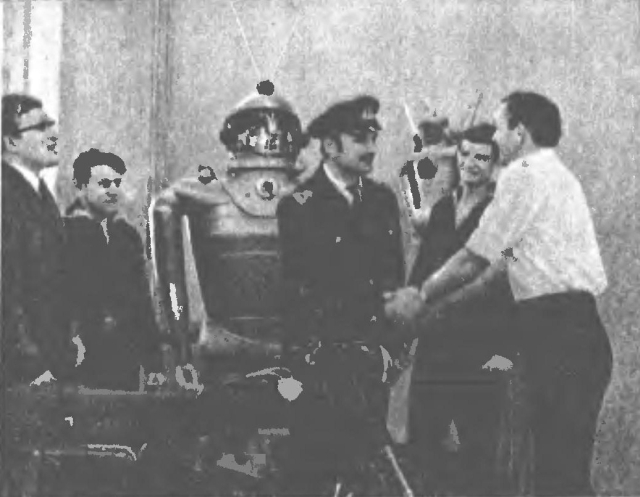

The above and below images are from TM Nov 1966 – pre-dating my blog post entry date. Once I get further qualifying information, I will update the dates as appropriate.

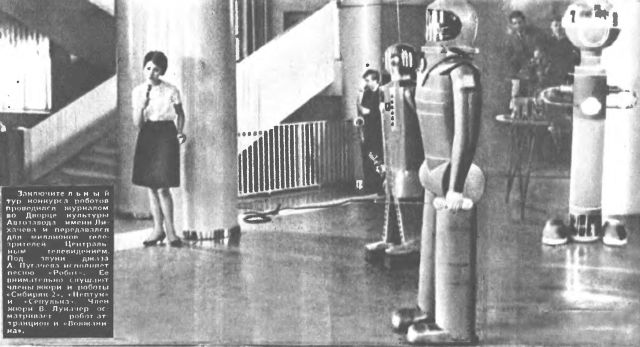
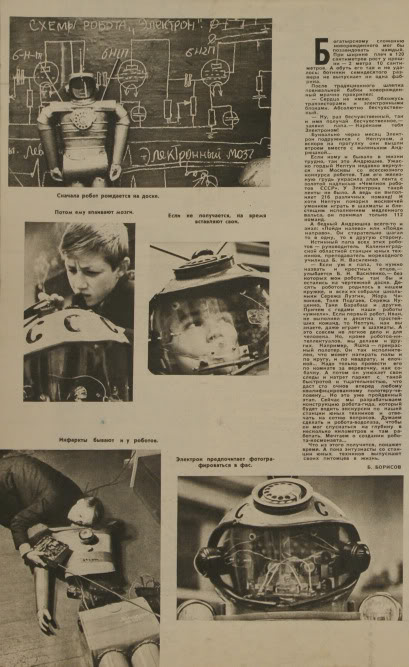
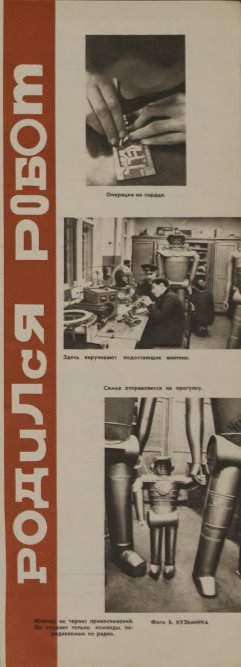
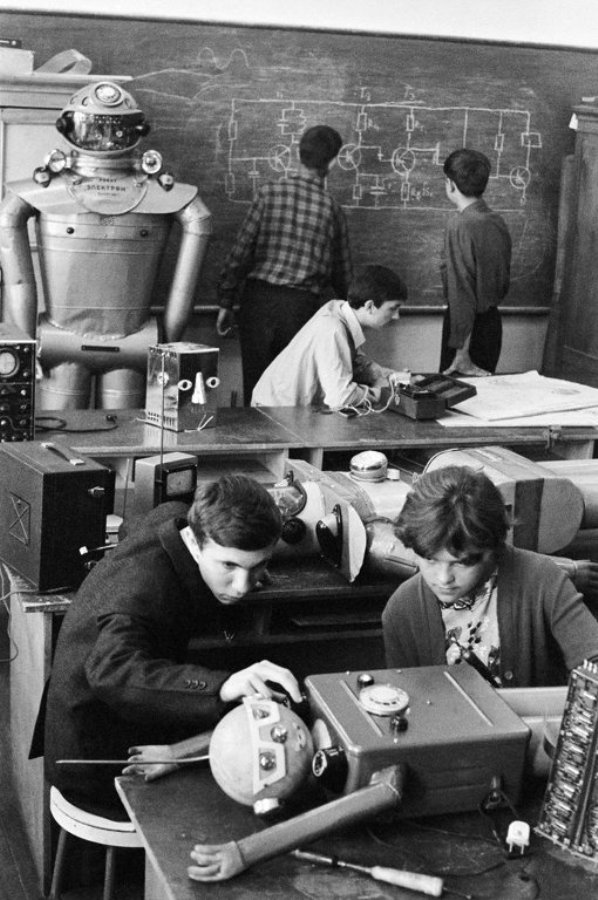
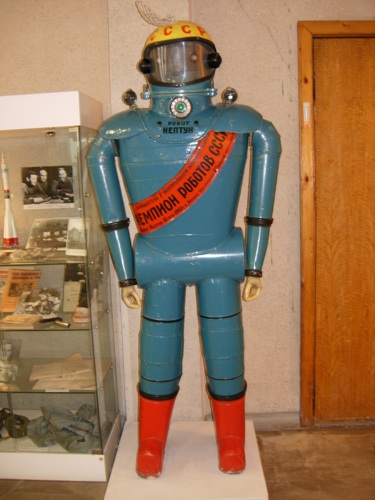
Neptune as he is today, still wearing his 1967 Exhibition winner's sash. He resides in the local cultural and historical museum at Königsberg.
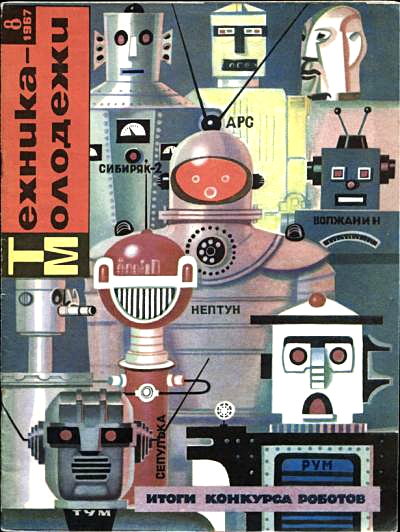
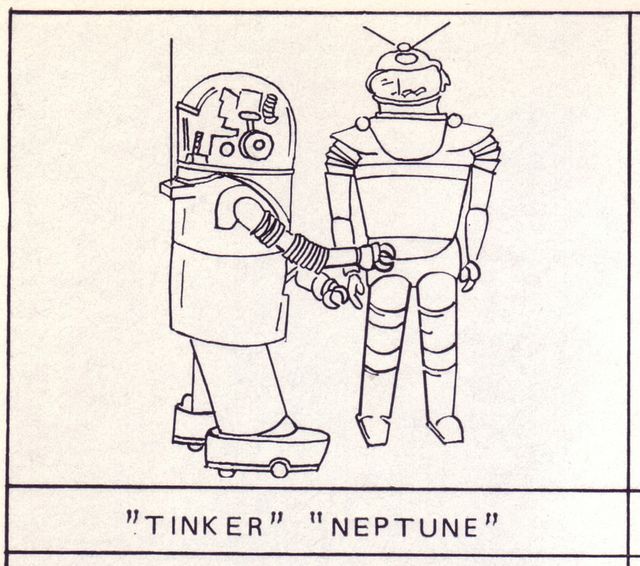
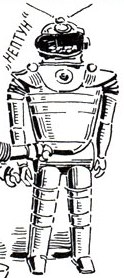
There are a few variants of these Humanoid robots. The name Electron appears with a robot with a rounded helmet head, the other a cylindrical head. Some of the photo's also contain other robots, indicating a family of robots, even an extended family of robots. As the evidence presents itself, I will eventually unravel this quandry.
The Other Kaliningrad Robot

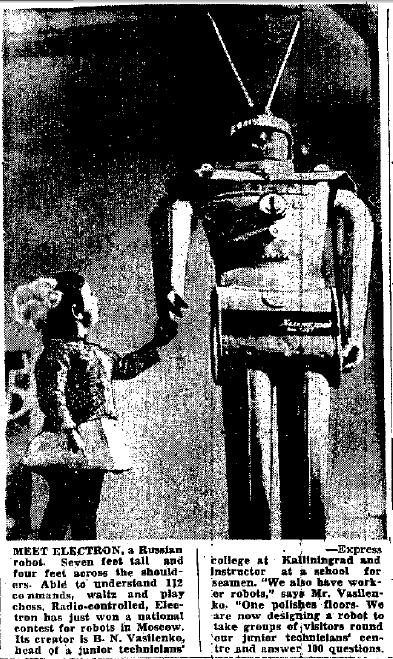
MEET ELECTRON, a Russian robot. Seven feet tall and four feet across the shoulders. Able to understand 112 conmands, waltz and play chess. Radio-controlled, Electron has just won a national contest for robots in Moscow. Its creator is B. N. Vasilenko, head of a junior technicians' college at Kaliningrad and instructor at a school for seamen. "We also have worker robots," says Mr. Vasilenko. "One polishes floors. We are now designing a robot to take groups of Visitors round our Junior technicians' centre and answer 100 questions.
Note: Although related, this robot, similar but different, may not be actually called Neptune.
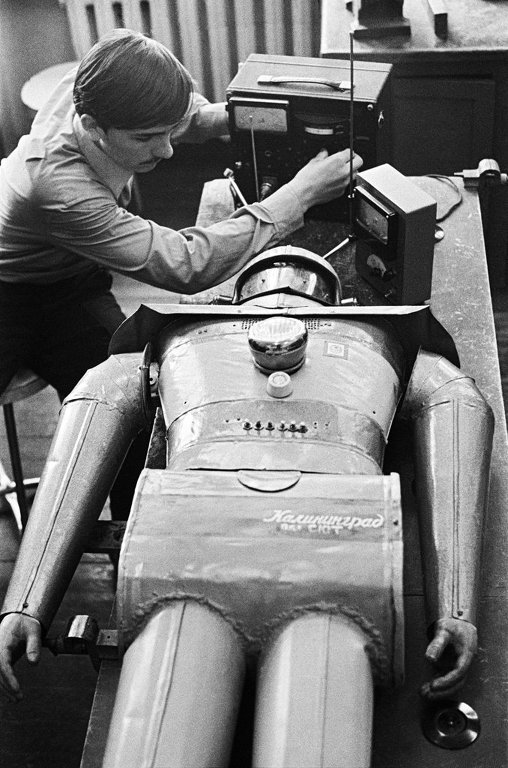
A youngster adjusting the controls that will bring a robot to life. Meanwhile, the robot is taking things easily.
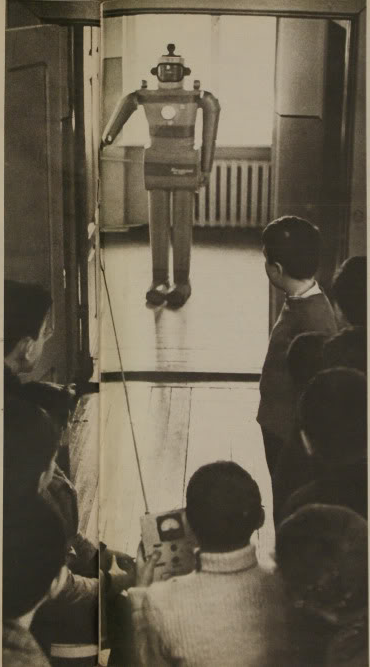

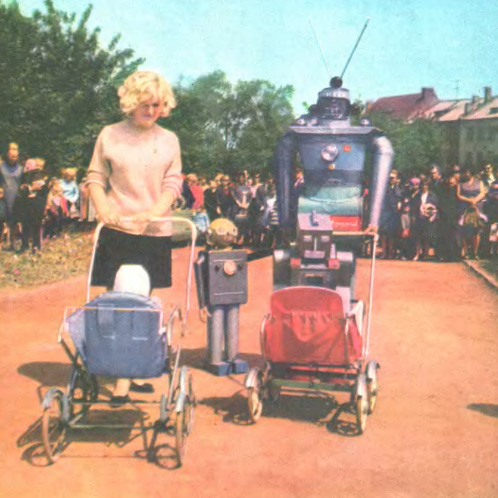
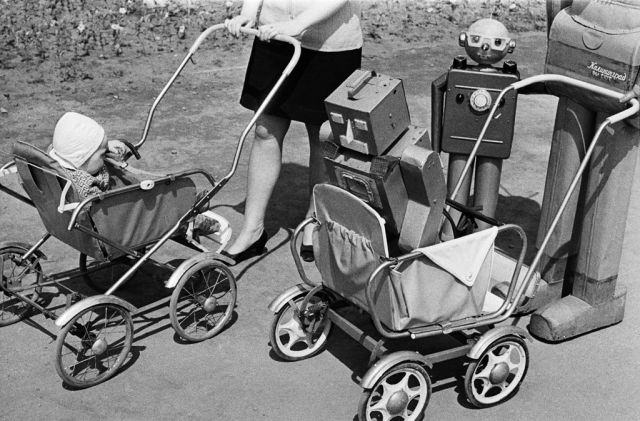
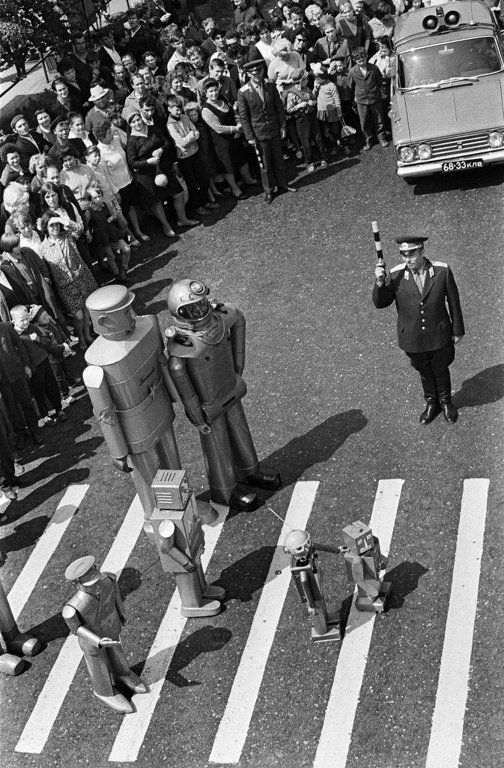

can this robot talk